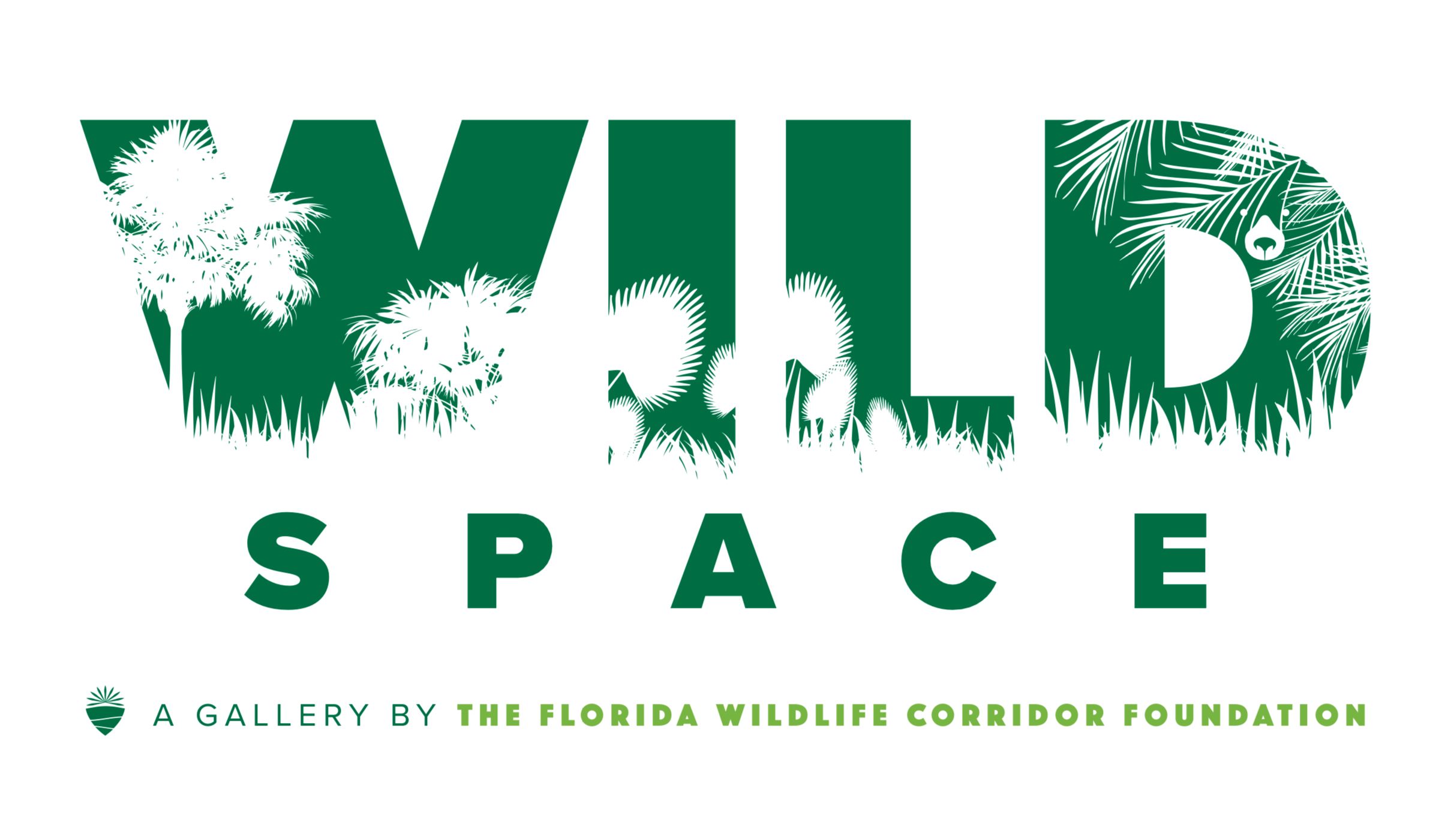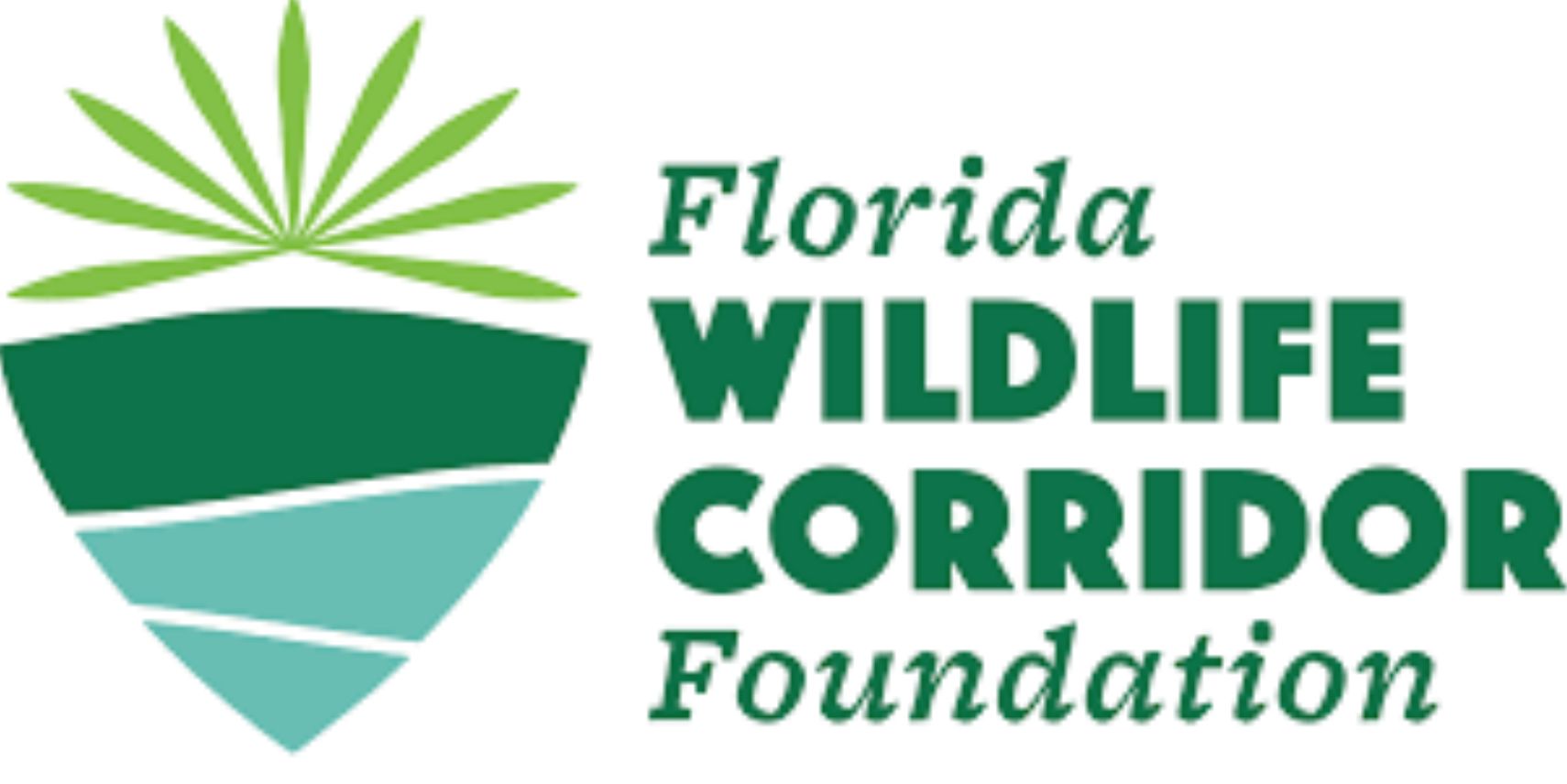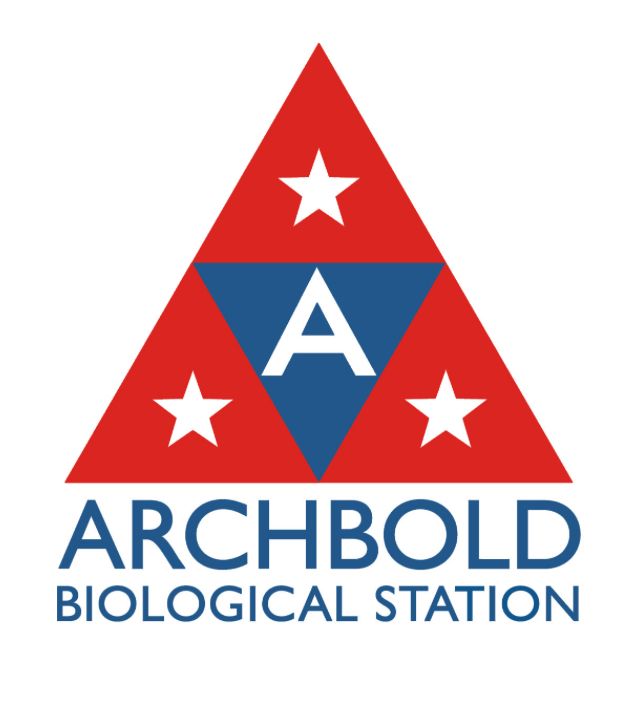Timeless: Art, Science, and Nature
at Archbold Biological Station
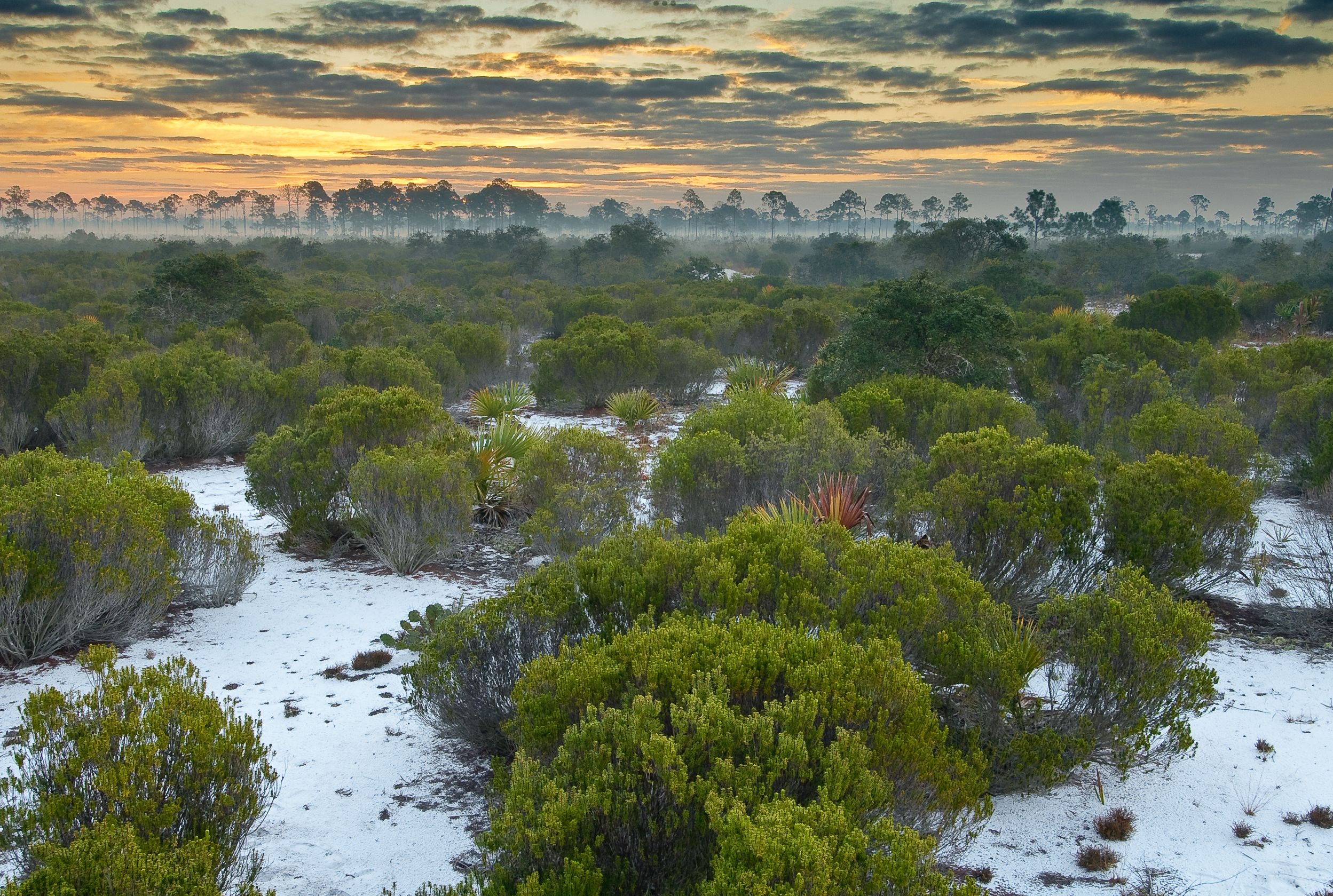
Artist Statement
"There is art to science and science in art; the two are not enemies, but different aspects of the whole." - Isaac Asimov
A haunting song for strings, based on a lake's observed temperature data ... jaunty drawings of ants crawling over an entomologist's lab table ... a photograph of an owl pellet that, split in half, reveals secrets of the predator's life...
While science relies on facts, and art on imagination, the two creative approaches can merge, as the exhibition Timeless: Art, Science, and Nature at Archbold Biological Station suggests. Works by scientists and artists made at Archbold include painting, drawing, photography, printmaking, music, video, and installation by Dustin Angell, Reed Bowman, Mark Deyrup, Mollie Doctrow, Michele Oka Doner, Maria Eisner, Thomas Eisner, Evelyn Gaiser, Deborah Mitchell, and Kristy Sullivan.
A special children's section invites inspired young visitors to participate by creating art on-site, which will be added to works produced during Archbold's extensive K-12 educational programming.
Scientists are increasingly interested in art as they look for ways to magnify their powers of visualization and broaden the understanding and appeal of their work to the public. Artists, on the other hand, are more than ever invested in issues that involve scientific research, especially concerning the environment, as they integrate solid knowledge into their art. Works made at Archbold by resident scientists and artists reflect its mission's emphasis on long-term, in-depth, continuing research and educational outreach to benefit the living creatures, lands, and waters within its boundaries and beyond.
Many thanks to the Archbold faculty, staff, and artists, in particular: Hilary Swain, Director; Dustin Angell, Program Director of Education; Mark Deyrup, Emeritus Research Biologist, Entomology; Zach R. Forsburg, Engagement Manager; and Laura Reed, Executive Assistant.
Wild Space Gallery Team: Kat Duval, Gallery Intern; Elizabeth Nail, Gallery Operations Manager; Tony Palms, Exhibition Designer; Noel Smith, Curator.
This exhibit is made possible by the generous support of Bradley S. and Marta E. Pollitt and Family.
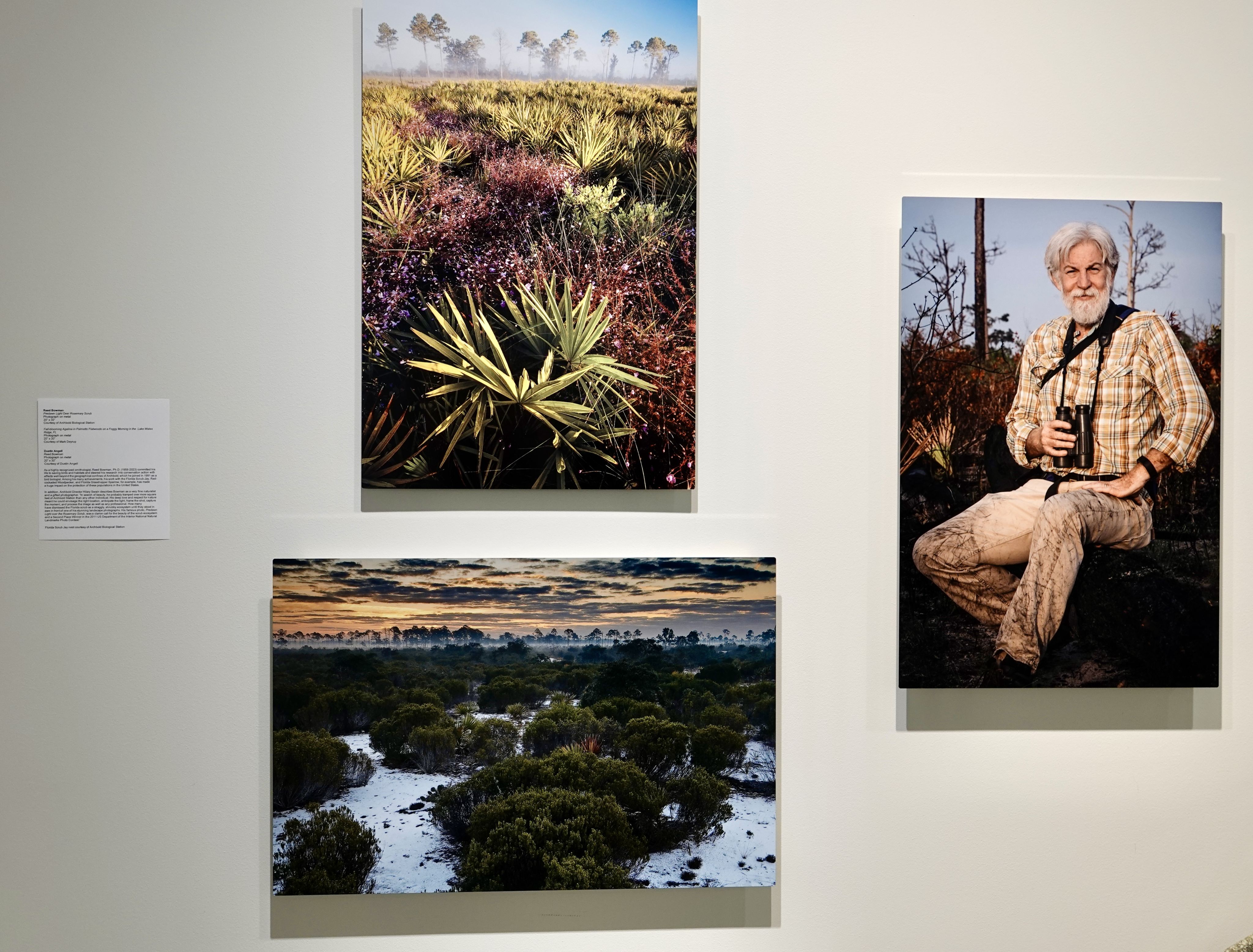


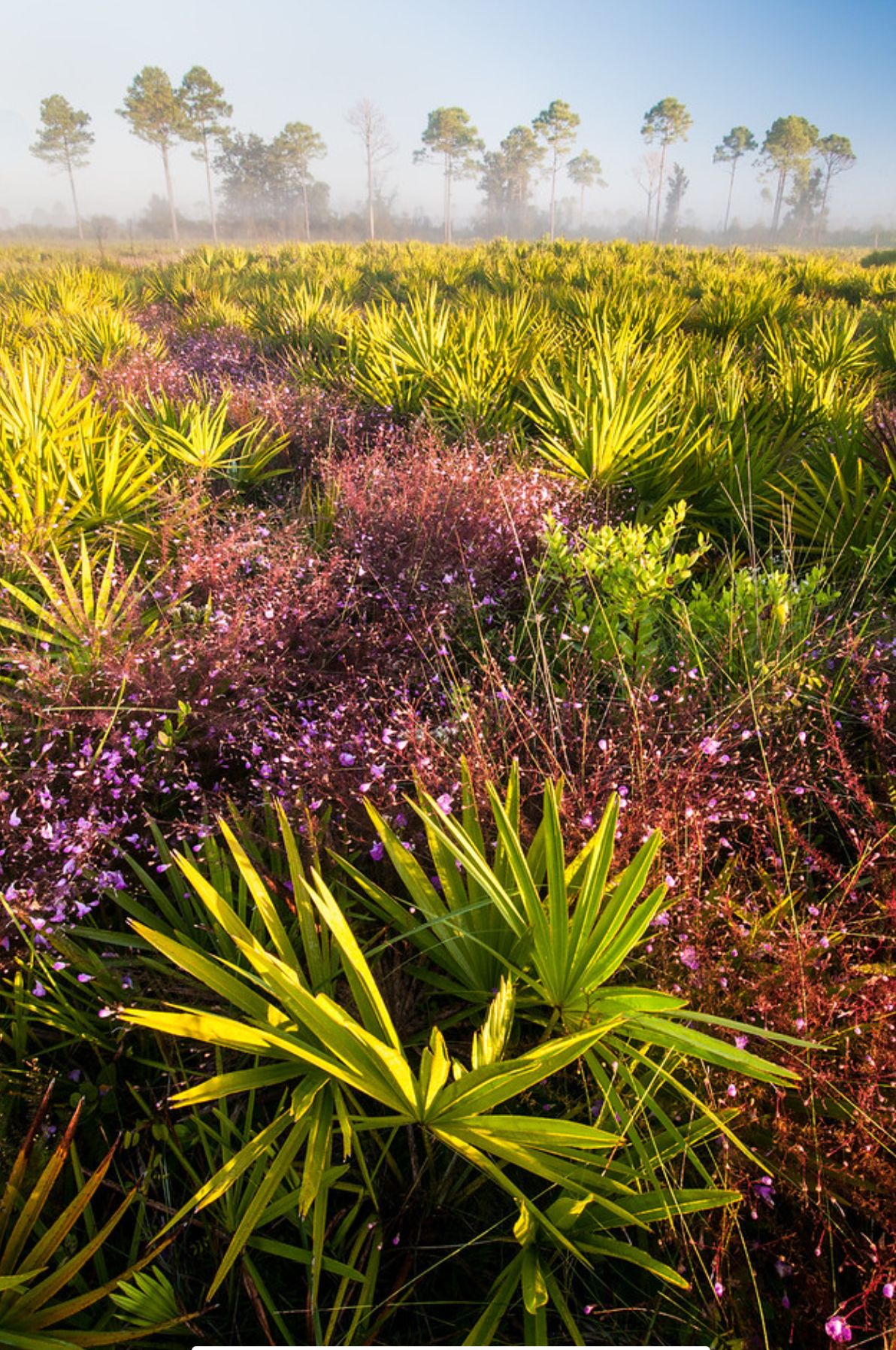

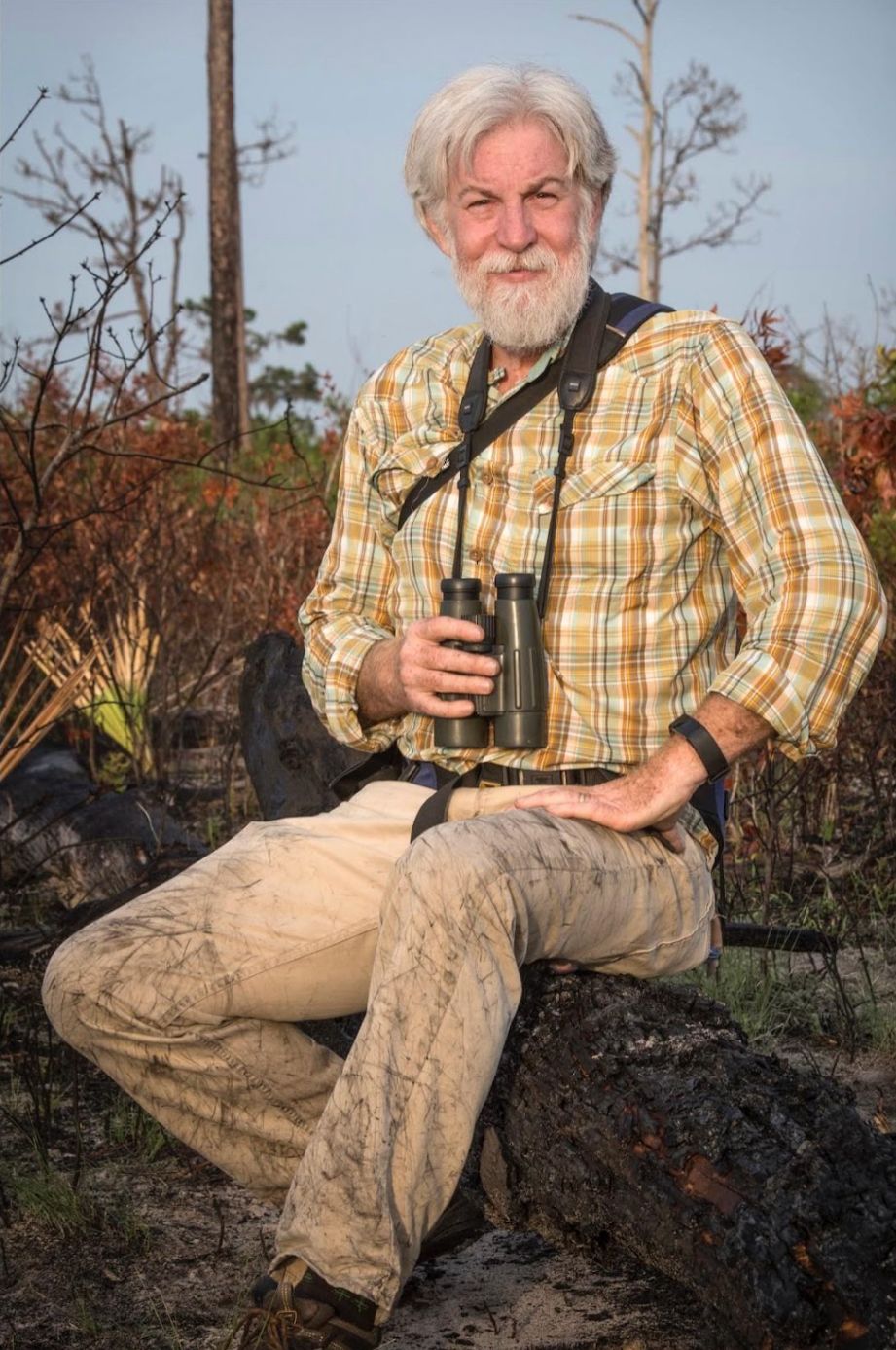

Predawn Light Over Rosemary Scrub
Reed Bowman
Photograph on metal 20” x 30”
Courtesy of Archbold Biological Station
Fall-blooming Agalina in Palmetto Flatwoods on a Foggy Morning in the Lake Wales Ridge, FL
Reed Bowman
Photograph 20” x 30”
Courtesy of Mark Deyrup
Reed Bowman
Courtesy of Dustin Angell
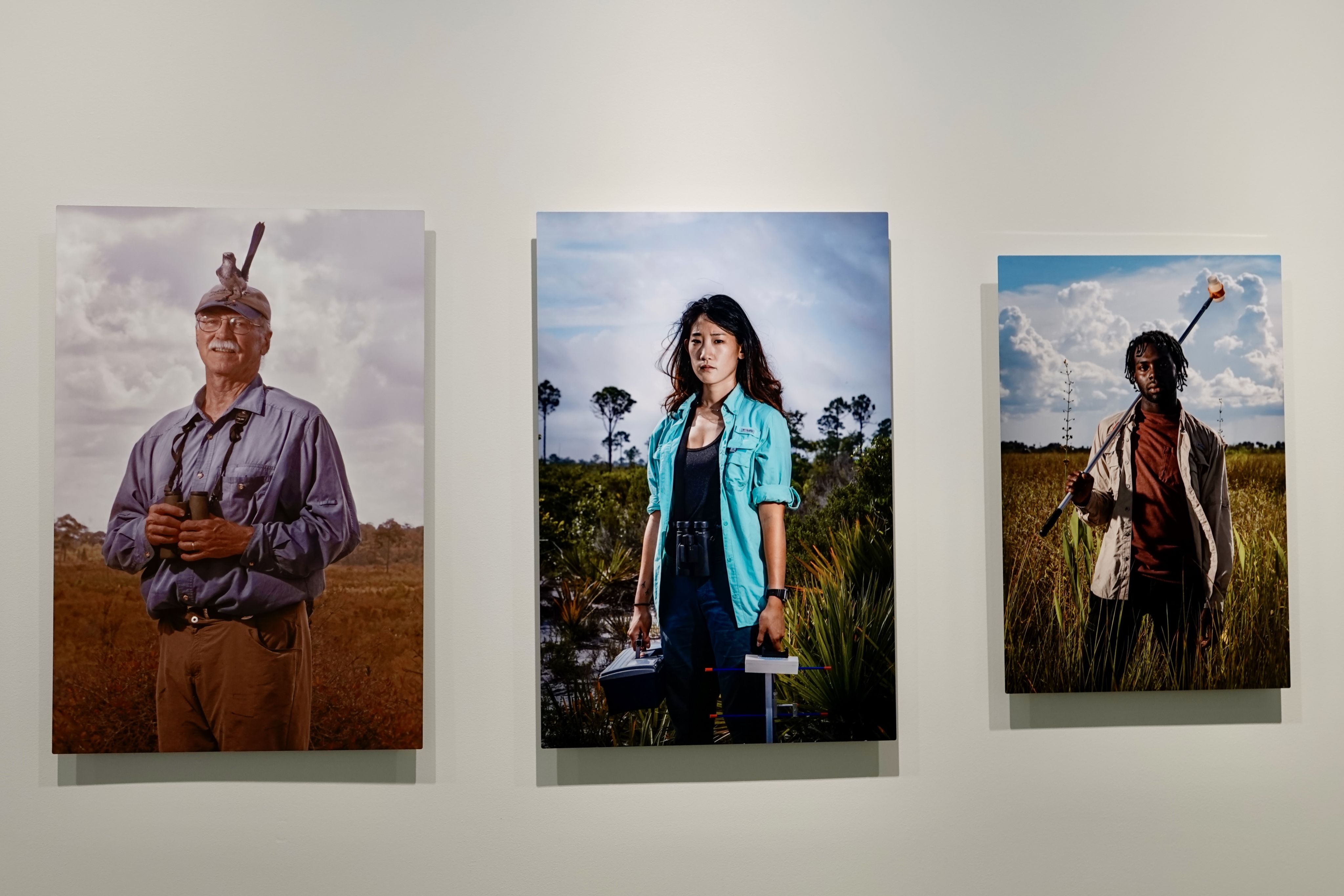

Dr. John “Fitz” Fitzpatrick, Wildlife Biologist, Archbold Biological Station
photograph on metal 24” x 36”
Courtesy of Dustin Angell
Yung Ha Sui, Wildlife Biologist, Archbold Biological Station
Courtesy of Dustin Angell
Akiem Gough, Agro-ecology Researcher,
Buck Island Ranch photograph on metal 20” x 30”
Courtesy of Dustin Angell
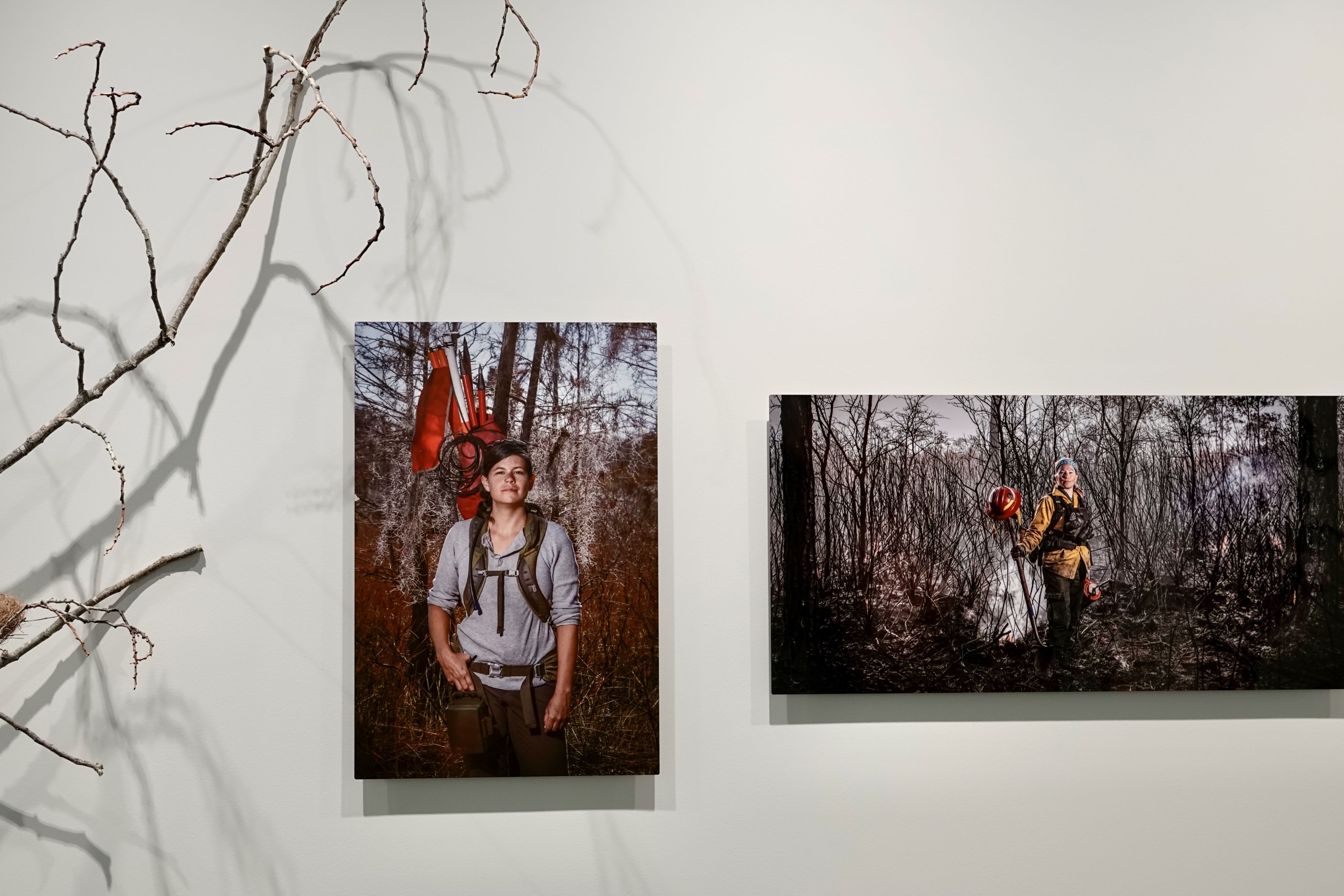

Emily Angell, Wildlife Biologist, US Fish and Wildlife and Avon Park Air Force Range
photograph on metal 24” x 36”
Courtesy of Dustin Angell
Elysia Dytrych, Biologist, Lake Wales Ridge and Environmental Area
photograph on metal 36” x 24”
Courtesy of Dustin Angell
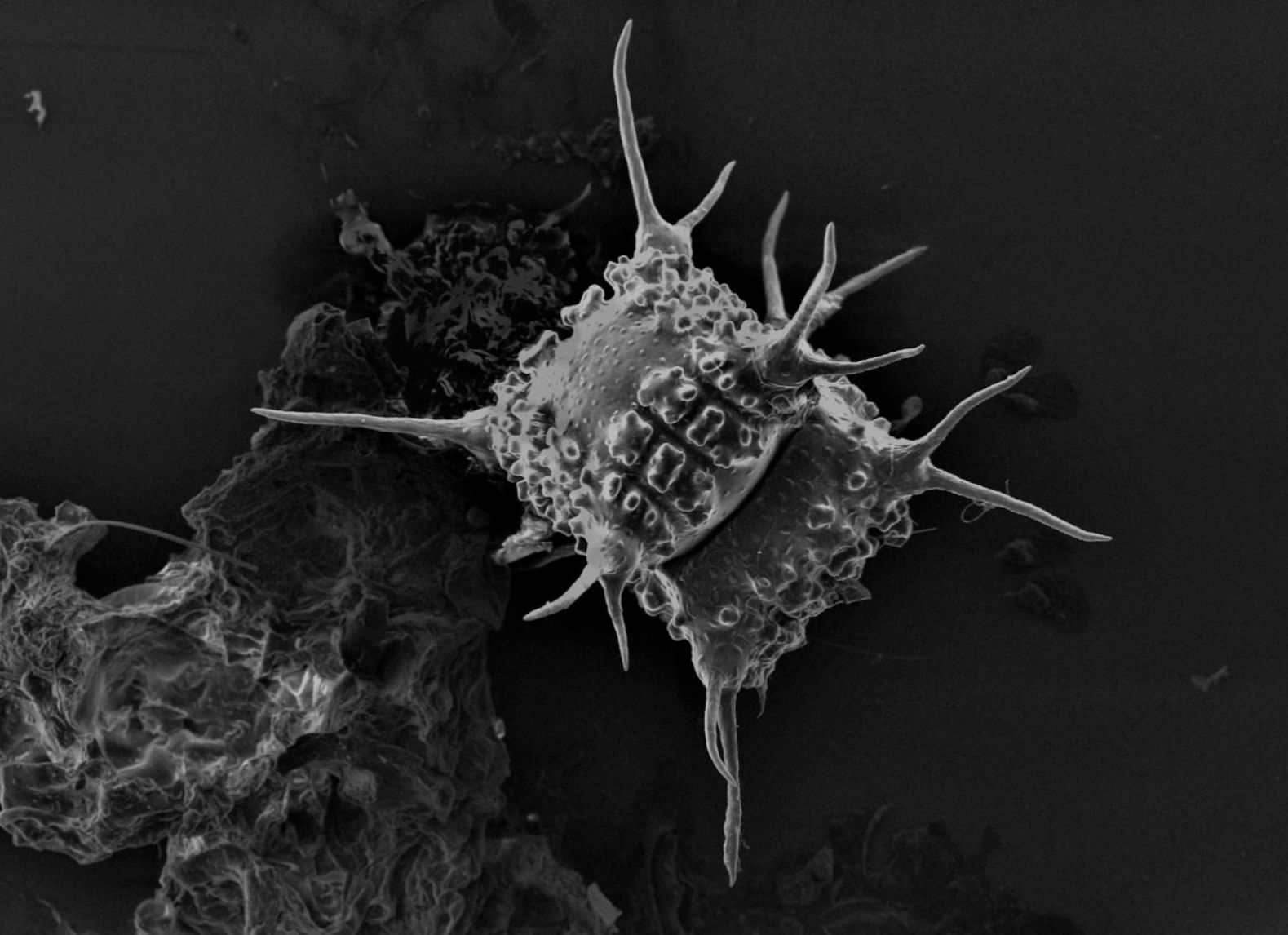

Staurastrum nova-caesurae
Electron microscope photograph on metal 20” x 30”
Courtesy of Archbold Biological Station
For two years, biological scientist Kristy Sullivan studied Lake Annie’s phytoplankton and the effects of brownification on the health of the water. Staurastrum nova-caesurae is a phytoplankton found in Lake Annie. Phytoplankton are single-celled algae and cyanobacteria that inhabit the upper sunlit layer of marine and fresh water bodies of water. They provide an estimated 50-80% of the world’s oxygen and absorb between 30 and 50% of the world’s carbon dioxide. Brownification is the darkening of water due to overabundance of phytoplankton, fed from increased dissolved organic matter.
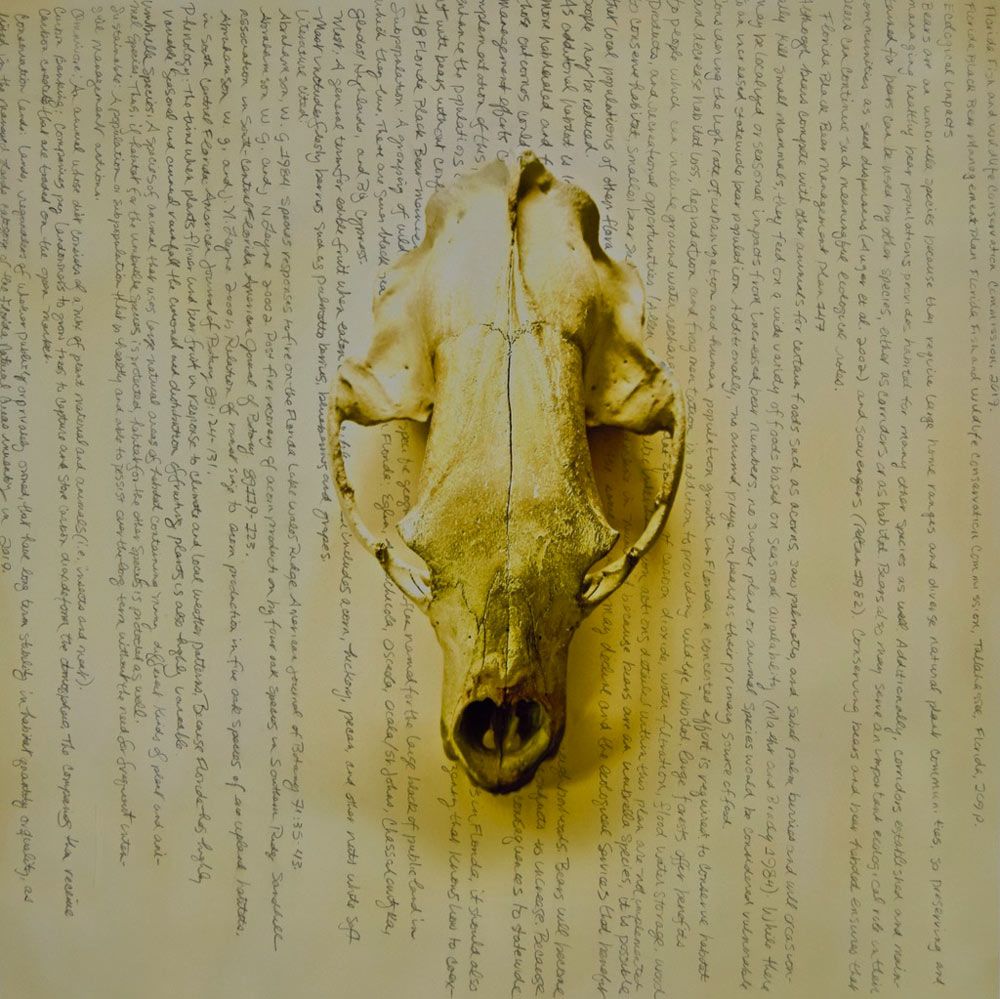

Ursus americanus floridanus
Deborah Mitchell
printed on aluminum substrate
30” x 30”
Courtesy of Archbold Biological Station
Florida Steward and artist Deborah Mitchell has conducted life-long enviro artistic explorations of South Florida, often collaborating with a variety of scientific, environmental and indigenous organizations. During one of several residencies at Archbold, she photographed the skull of a Florida bear, a stunning sculptural reveal of the creature’s intricate skeletal structure.


Ant attempting to dislodge Blue Palmetto Beetle, Hemisphaerota cyan, clinging to leaf
Maria Eisner
Photograph on paper, framed 19” x 25”
Courtesy of Archbold Biological Station
Defensive glandular hairs on Cabbage Butterfly caterpillar Peris ropae
Maria Eisner
Photograph on paper, framed 19” x 25”
Courtesy of Archbold Biological Station
Palmetto Fluid Bug Orasema rufifasciata, lives on underside of palmetto leaves
Maria Eisner
Photograph on paper, framed
19” x 25”
Courtesy of Archbold Biological Station
Thomas Eisner
Photograph on paper, framed 19” x 25”
Courtesy of Archbold Biological Station
Flower Scarab Beetle, Trichiotinus rufobrunneum showing bee-like face on rear end
Thomas Eisner
Photograph on paper, framed 19” x 25”
Courtesy of Archbold Biological Station
African Bombardier Beetle, Stenaptinus insignis, aiming defensive spray at pinching forceps
Thomas Eisner
Photograph on paper, framed 19” x 25”
Courtesy of Archbold Biological Station
Tequesta Grasshopper, Melanoplus tequestae, a flightless scrub grasshopper
Thomas Eisner
Photograph on paper, framed 19” x 25”
Courtesy of Archbold Biological Station
Celebrated entomologist Thomas Eisner is known as the “father of chemical ecology” (along with Jerrold Meinwald). A polymath, Eisner had a passion for insects, which he called “master chemists,” and he studied diverse fields in order to describe highly evolved processes and systems among them. His image African Bombardier Beetle, Stenaptinus insignis, aiming defensive spray at pinching forceps, documents how the explosive, high-temperature spray of the beetle wards off predators.
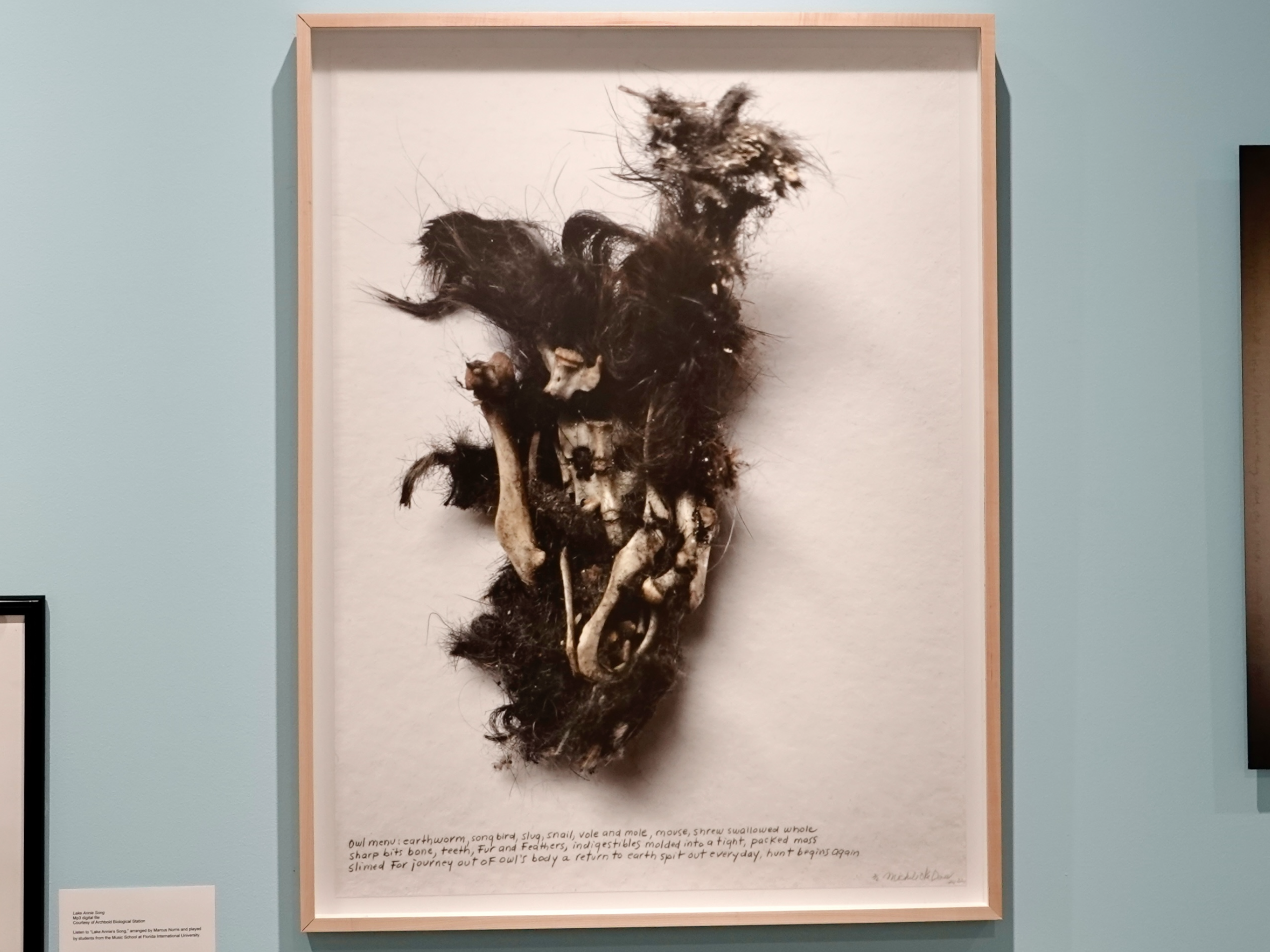

Owl Menu
Michelle Oka Doner
Photograph 34” x 44”
Courtesy of Archbold Biological Station
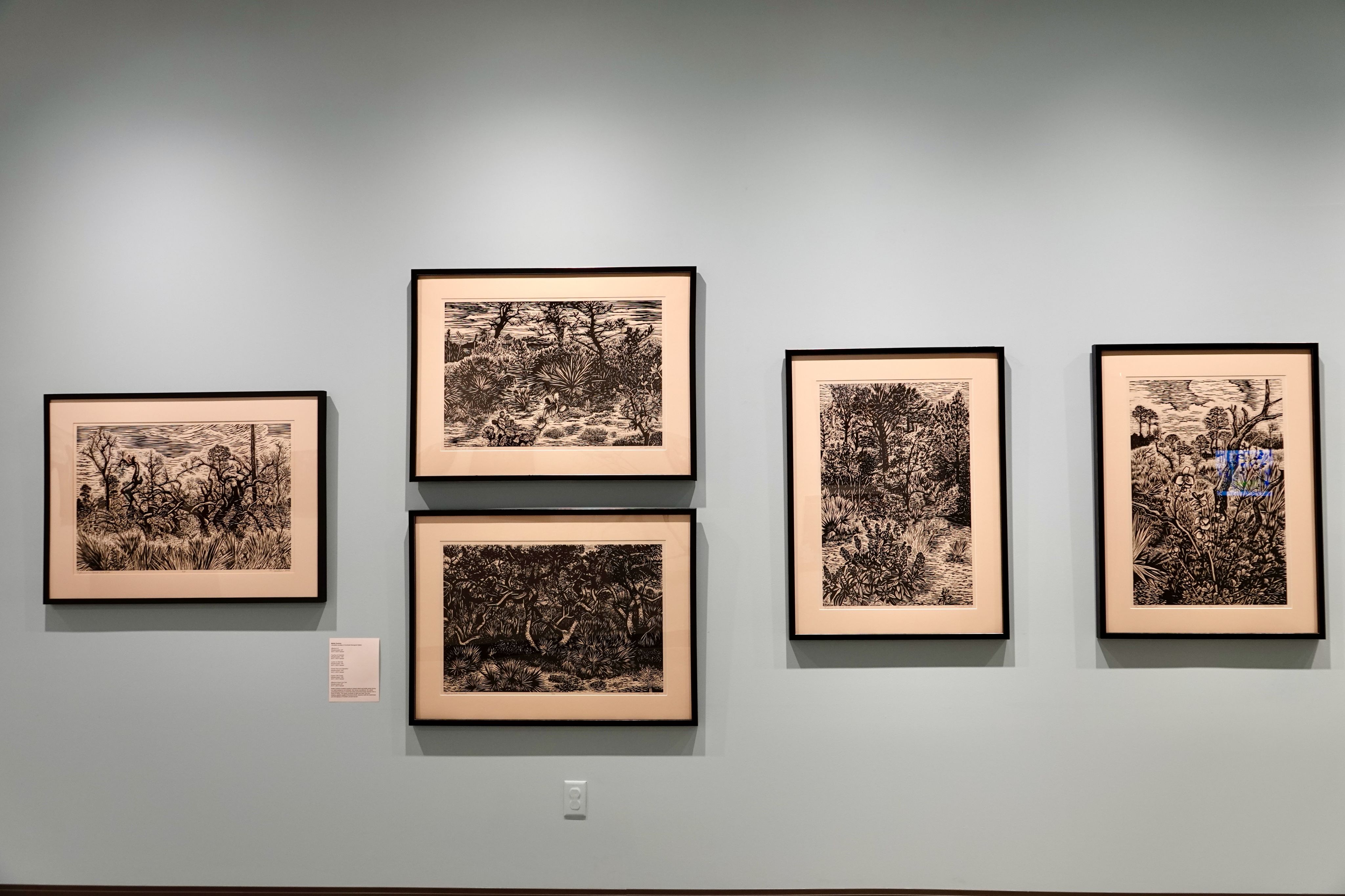

Prickly Pear and Palmettos, 2008
Mollie Doctrow
Woodcut print, 31” x 21”
Courtesy of Archbold Biological Station
Pygmy Oak Forest, 2008
Mollie Doctrow
Woodcut print, 31” x 21”
Courtesy of Archbold Biological Station
Paw Paw & Palmetto, 2008
Mollie Doctrow
Woodcut print, 31” x 21”
Courtesy of Archbold Biological Station
Lupine on Red Hill, 2008
Mollie Doctrow
Woodcut print, 31” x 21”
Courtesy of Archbold Biological Station
Afterburn- Sand Live Oak, 2008
Mollie Doctrow
Woodcut print, 31” x 21”
Courtesy of Archbold Biological Station
Afterburn III, 2009
Mollie Doctrow
Woodcut print, 31” x 21”
Courtesy of Archbold Biological Station
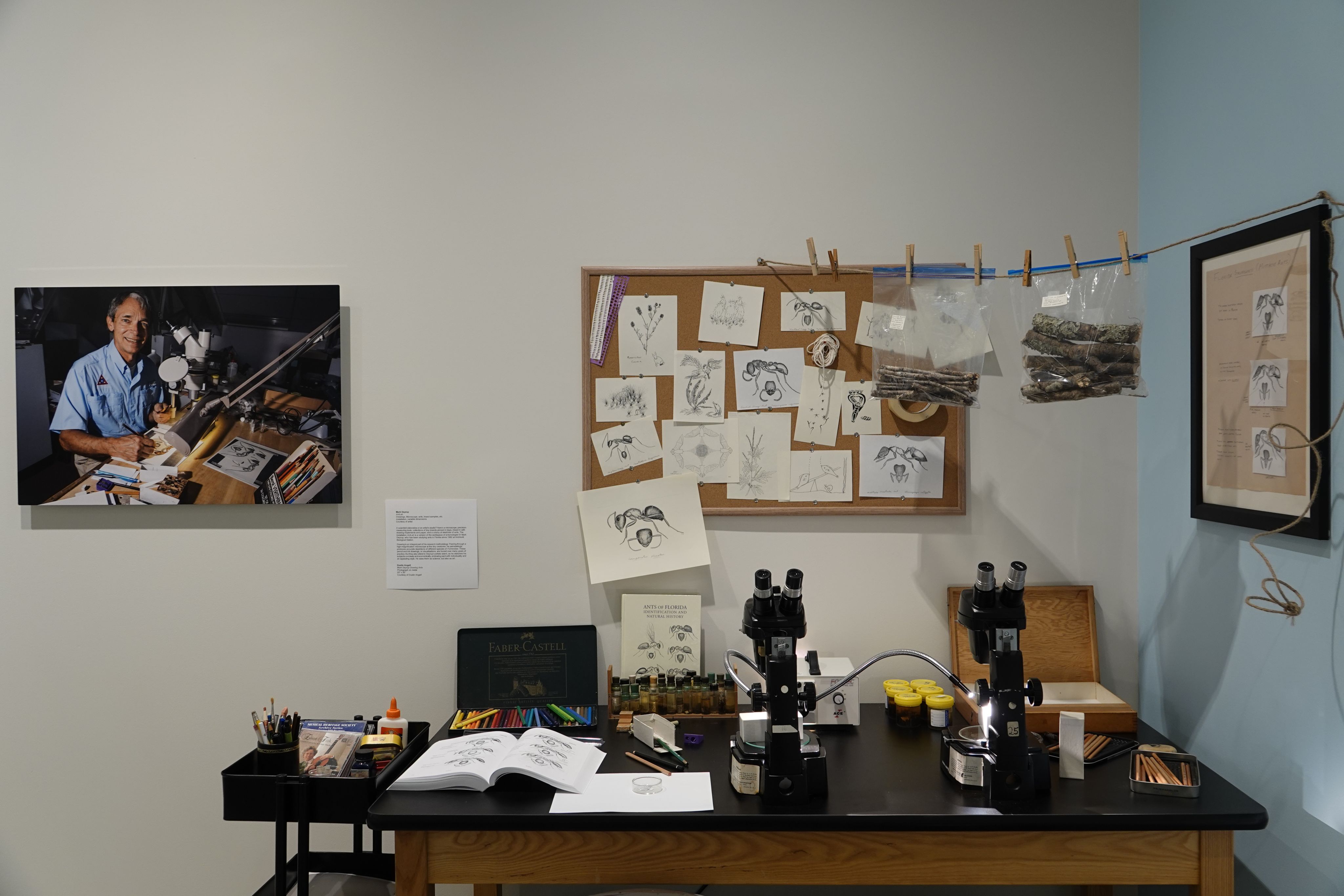

Mark Deyrup Drawing Ants
photograph on metal 20” x 30”
Courtesy of Dustin Angell
$250.00
AntLab
Mark Deyrup
Drawings, Microscope, ants, etc. Installation, variable dimensions
$2,000.00
My Science Future: Art & Science Workshop at Wild Space Gallery
Feb 24, 2024, 1PM-2:30PM
Age: 7-12 years old
In this workshop, children imagine themselves as wildlife biologists and ecologists. Science educator and conservation photographer, Dustin Angell (from Archbold Biological Station) will lead them through the art exhibit Timeless: Art, Science, and Nature at Archbold Biological Station on display at Wild Space Gallery, which explores the habitats, scientific research, and scientists of the station in Venus, Florida. Children practice visual literacy skills as they examine portraits of scientists, observing what tools are needed for different kinds of research. Then, in an art activity, the children envision themselves as scientists. They draw self-portraits of their science selves and write statements about how their science-self learns about and protects nature.
Biography:
Dustin Angell is an environmental educator and conservation photographer living and working in the headwaters of Florida’s Everglades. As the Program Director of Education at Archbold Biological Station in Venus, FL, he builds community relationships and interprets ecological research for audiences of all ages. Dustin holds a Bachelors of Fine Arts degree from Alfred University. Dustin’s photography, which highlights science and environmental stewardship, has been published nationally, locally, and regionally. Dustin is an award-winning environmental educator and recipient of the Outstanding Educator Award from the Florida Chapter of the Wildlife Society.
To learn more about education and events at Archbold Biological Station, visit https://archbold-station.org/education/
